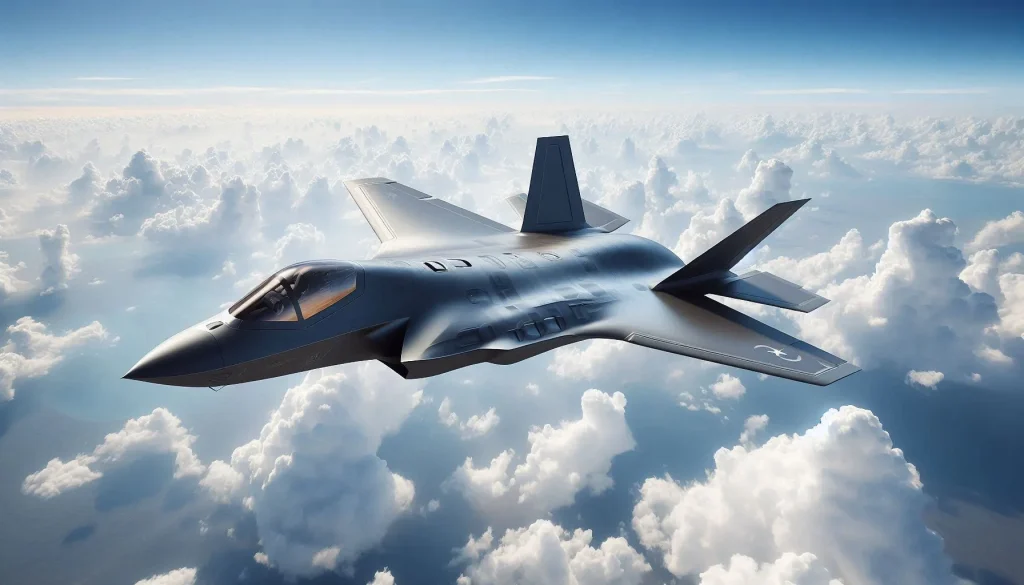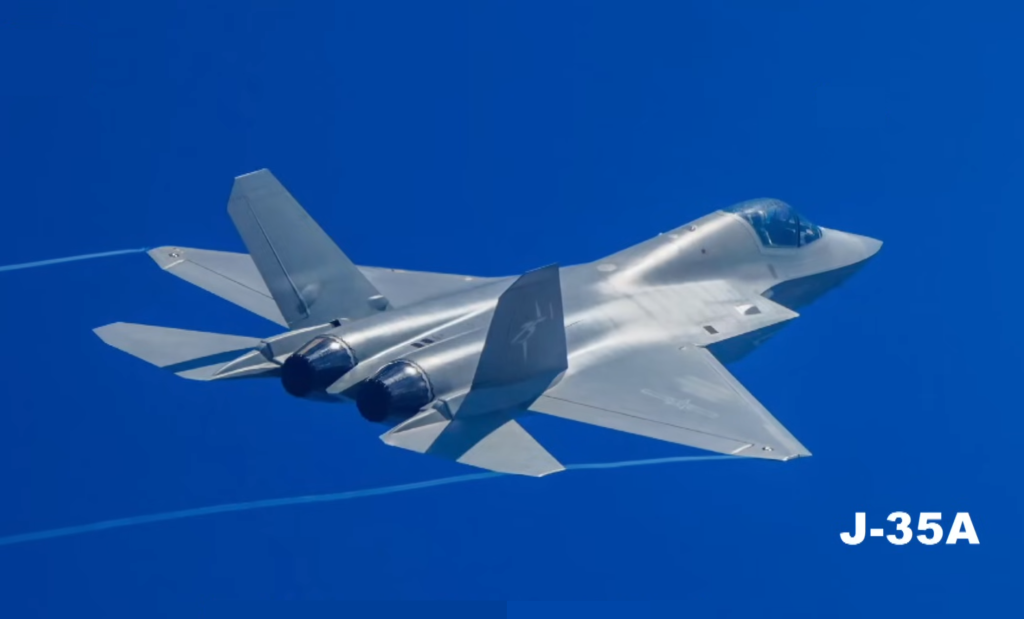According to a Chinese defense analyst quoted in Global Times:
“Pakistan is not just a customer. It is a doctrinal partner. The J-35’s deployment tests reflect the maturing of a joint deterrence framework.”
Beijing + Islamabad ( Web News )
In a development that has stunned Western observers and forced doctrinal recalibration across South Asia, China and Pakistan have jointly test-flown the first Pakistan-liveried J-35A ‘Gyrfalcon’ stealth fighter over the Karakoram. The flight was carried out with Chinese and Pakistani pilots aboard, fully integrated with Beidou satellite command, AWACS uplink, and ground-based stealth-tracking denial systems.
But this wasn’t just a test of technology—it was a demonstration of trust. It marked a transformation of Pakistan’s role from a tactical partner to a privileged strategic ally—one now privy to China’s most advanced combat doctrine.
“This isn’t just cooperation. It’s full-spectrum fusion.”

A senior European defense attaché based in Islamabad told us on background:
“We knew the J-35 would be exported. But we didn’t expect Pakistani pilots to be inside the cockpit before full PLAAF deployment. That’s unprecedented. This isn’t just cooperation. It’s full-spectrum fusion.”
According to multiple military observers, the J-35A flights over Gilgit-Baltistan were not simulations.
They were high-fidelity integration drills, including:
Real-time radar suppression exercises
Satellite-guided targeting against virtual enemy airframes
Live interception of AWACS and low-observable drone targets
Simulated Rafale/Meteor scenario tracking
These were not “orientation flights.”
They were doctrinal rehearsals.
A Stealth Jet—and a Strategic Message

A former Indian Air Marshal, speaking anonymously to a UK-based defense publication, admitted:
“If Chinese and Pakistani pilots are flying J-35As in combat configurations, it fundamentally changes the balance. The Rafale edge we built is gone. Stealth has reached our borders.”
The J-35A is China’s answer to the F-35, and the fact that it’s being tested in Pakistani airspace under joint command is a clear message to both India and the West:
China trusts no one more than Pakistan with its crown jewel.
Why This Is a Strategic First
While Russia has exported Su-35s and is co-developing Su-75, it has not integrated any ally into its core fifth-gen doctrine. Nor has the U.S. allowed any non-NATO state full access to F-35 flight protocols.
China just did.

According to a Chinese defense analyst quoted in Global Times:
“Pakistan is not just a customer. It is a doctrinal partner. The J-35’s deployment tests reflect the maturing of a joint deterrence framework.”
What Does This Mean for the Region?
India’s Rafale-Meteor doctrine is now under question.
The assumption of BVR superiority is neutralized by PL-15E range parity and J-35’s radar evasion.
China has field-tested integrated battle cloud architecture in South Asia.
This means AWACS, satellites, and stealth jets in unified command, with Pakistani coordination.
CPEC is no longer just a road—it’s a shield.
With Gilgit-Baltistan becoming an aerial bastion, Chinese stealth can now dominate the Siachen-Galwan axis if needed.
“We’re Inside the System Now” A retired PAF Air Commodore, familiar with the test protocols, put it bluntly:
“This isn’t just about receiving jets. It’s about being inside the operating system. We’re no longer flying Chinese jets—we’re flying with China, in China’s future.”
With the J-35A, Pakistan hasn’t just closed the gap.
It has entered the command structure of the next global aerial paradigm.
The friendship is over.
What exists now is strategic fusion.

